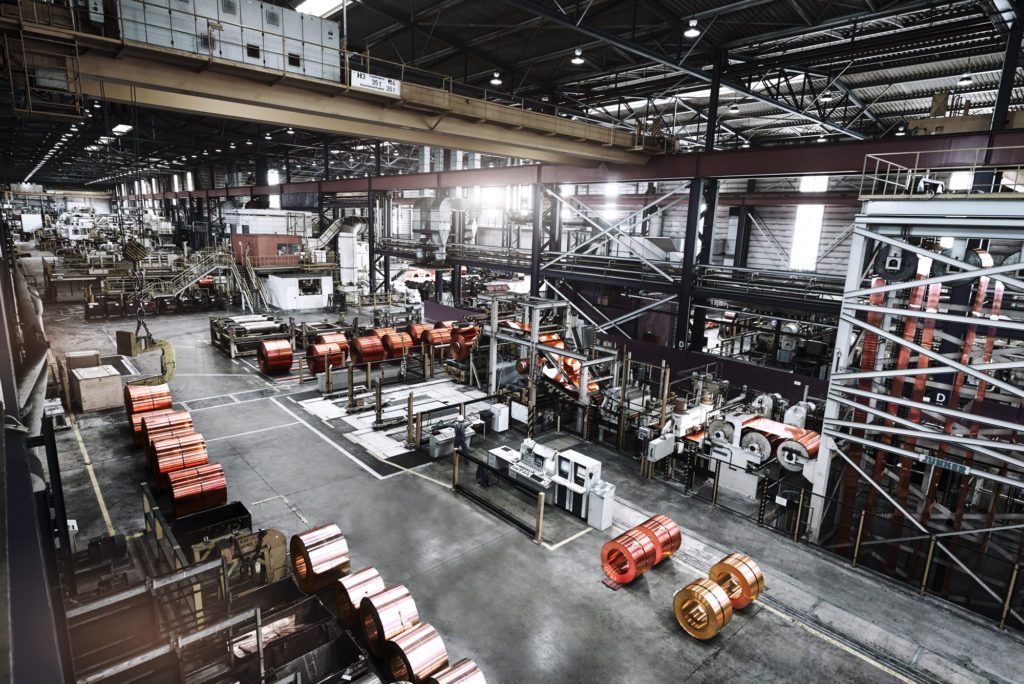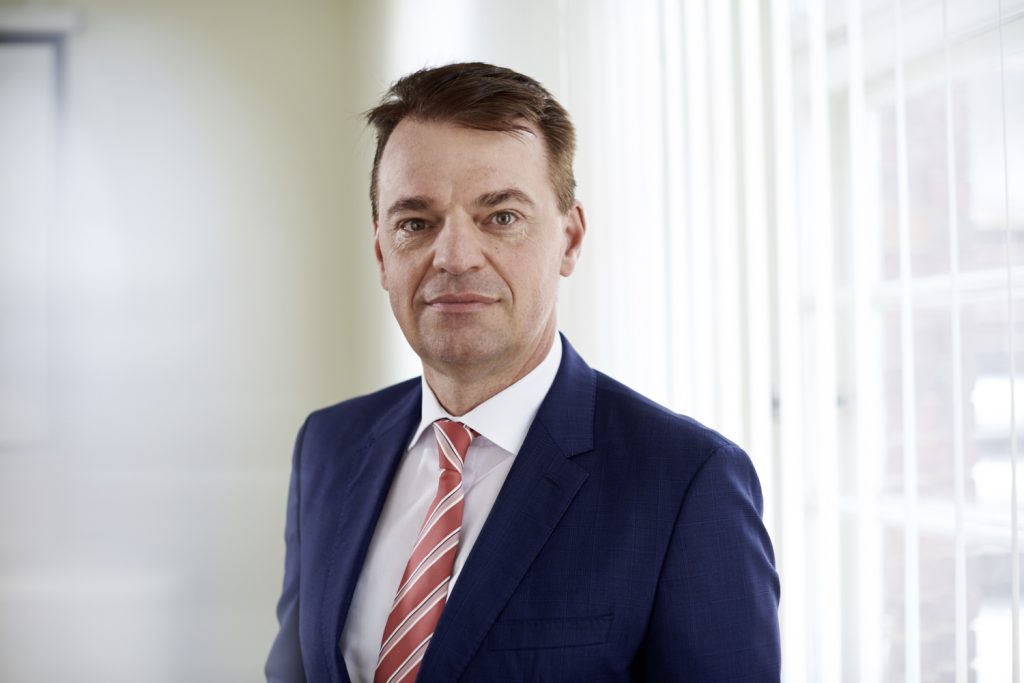MKM is Growing with the global megatrends
*This article was published in UPCAST Review 05/2017. After that MKM was acquired by KME Group and is now known as KME Mansfelder GmbH.
As early as 1199, copper shale was discovered near Hettstedt, Germany. Over 800 years later, Mansfelder Kupfer und Messing GmbH, better known by the acronym MKM, is providing a complete range of copper products to a thousand customers in 60 countries worldwide – and is growing rapidly to answer the needs of modern-day technology industries.
The new UPCAST® lines offer a production capacity of 26,000 tonnes and allow us to deliver copper products with higher conductivity for customers in thriving industries.
The electronics and construction industries, solar and wind energy, plant engineering, automotive industry, aerospace and telecommunications – MKM’s operations cover almost every growing industrial sector one can name. Building on its strong history in copper processing, MKM is striving to grow simultaneously with global megatrends, such as renewable energies, e-mobility and digitalisation. During the last 20 years, the company has invested over 400 million euros in boosting its operations. And now MKM intends to invest about 100 million euros until 2020 to prepare for expected growth.
– We are investing strongly in growth, and expect double-digit expansion in the coming years. Our vision is to develop alloys that enable our customers to benefit from high conductivity and lightweight construction combined with more resistance, says Mr Roland Harings, CEO of MKM.

In accordance with MKM’s plans for growth, they implemented two UPCAST® production lines for oxygen-free copper production in March 2017.
– A significant share of our investment programme is dedicated to machines offering improved process capabilities. The new UPCAST® lines offer a production capacity of 26,000 tonnes and allow us to deliver copper products with higher conductivity for customers in thriving industries, says Harings.
– Initial results are very positive and confirm the good impression we had of UPCAST throughout the project.
Certified world-class quality
The ever-evolving technologies used in car manufacturing create a significant demand for high-conductivity copper wire. According to the Fraunhofer Society, a renowned German research organisation, by the year 2050 around 20 per cent of the global demand for copper will come from the automotive industry.
– There is already up to six kilometres of copper wire in the electrical system of a standard car, and with modern car technologies this is set to rise significantly. Copper components make up 24 kilos of copper per car. In hybrid cars this quantity doubles, while in electric cars the requirement is three times as high. This means an increase of 75 kilos per car, says Mr Harings.
As the demand grows, so will MKM – not only in terms of production capacity, but also quality-wise. The company has always been meticulous about the high standards of its products, and is therefore continuously developing their quality control processes.
– We have already introduced numerous superior testing procedures that are unique in our industry. Our ambition is to be an absolutely reliable partner of choice for our customers. We utilise the very latest testing technologies and equipment in production, in the chemical lab, in mechanical materials testing, in metallography and in metal physics, says Mr Harings. Many of these testing procedures have been adopted by analysing comparable industrial sectors.
Recently, MKM has received a new ISO certificate from Lloyd’s Register, which confirms the successful implementation of quality control: the ISO/TS 16949 certificate, received in November 2016, sends out a clear message of MKM’s expertise in copper production related to automotive and capital goods manufacturing. Furthermore, MKM has had its ISO 9001:2008 certificate – originally received in 1993 – renewed. The latter certificate’s requirements include the ability to consistently provide products that meet customer, statutory and regulatory requirements, as well as the aim to enhance customer satisfaction.
– We strive to deliver world-class quality. Certification proves that we execute and fulfil our customers’ requirements faultlessly and at a consistent level of quality, all the way from the enquiry stage to the finished product, to delivery to the customer, says CEO Harings.

Prospects for prosperity
As the CEO of MKM, Harings predicts a bright future for the whole copper manufacturing industry, the main ‘need for feed’ coming from the implementation of new and developing technologies.
– There are some really outstanding growth drivers for the copper industry, including e-mobility, renewable energy, cooling and heating, desalination for clean water, smart cities and so on.
In terms of MKM’s own success, Harings points out the company’s working culture, acknowledging the 1,200 employees of MKM.
Each and every one of our employees strives on a daily basis to achieve the unique quality of our products and for innovation. Around the world, our customers trust those employees. It is they who have made our company so strong, so customer-focused and so fit for the future. They create value and they embody value. That is what we are proud of. •
MKM
- A leading European manufacturer of primary and semi-finished products made of copper and copper alloys.
- The only manufacturer in the world to offer wire, strips, tubes, bars and sheets from a single source.
- Also known for Contirod® & Conti-M® technologies.
- Based in Hettstedt, Germany.
Who?

Roland Harings
- CEO of MKM (Mansfelder Kupfer und Messing GmbH) from 2014
- Graduated as a mechanical engineer from RWTH Aachen University in 1989
- Until 2014, Vice President Automotive at Novelis Inc. (USA), the world’s premier producer of rolled aluminum and the global leader in aluminum recycling
Kupferschiefer – discovered by accident
MKM’s headquarters are located in the town of Hettstedt, where, in 1199, two miners called Napian and Neuke came across a vast copper shale. Their discovery was the spark that ignited the success of German copper industry.
According to mining engineer W. P. Jervis’ article in the Journal of the Society of Arts, published in July 1861, ”Napian discovered the Kupferschiefer by mere accident, while digging a cellar near the then insignificant village of Hättstädt, and having it assayed, the result proved so satisfactory that he gave the present name of Kupferberg to the spot.”
In addition to their monetary value, the copper ore deposits of ”Kupferschiefer” have played a major role in the scientific study of ore genesis – and are thus worldfamous among geologists.
As stated by the United States Geological Survey Mineral Resources Program, during 800 years of mining, more than 2.5 million metric tonnes of copper have been produced from the Kupferschiefer deposits in east–central Germany. Around one million metric tonnes of discovered copper remain in identified deposits, and mean undiscovered copper estimates for the area amount to about 20 million metric tonnes.

